Archives
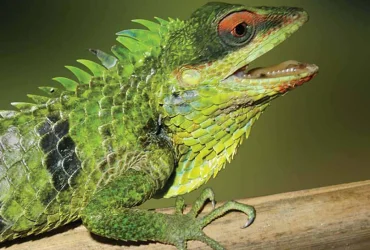 v1i2.14
v1i2.14ISSN: 1800-427X (print)
eISSN: 1800-427X (online)
DOI:10.47605/tapro.v1i2.14
Submitted date: 15 June 2009
Accepted date: 10 September 2009
Published date: 22 November 2009
Pp. 80–82.
ON THE HOLOTYPE OF Cnemaspis podihuna DERANIYAGALA, 1944
A.A. Thasun Amarasinghe* & Aaron M. Bauer
*Corresponding author. E-mail: thasun.taprobanica@gmail.com
Sri Lankan members of the gecko genus Cnemaspis Strauch, 1887 have recently been reviewed and redescribed. The endemic species Cnemaspis podihuna was first described by P.E.P. Deraniyagala in 1944 from Lahugala-Maha Oya area in Eastern Province based on five specimens (holotype and four paratypes). Deraniyagala (1944) clearly stated “Type - An adult male (fig. I) with the distal half of the tail broken off. Length…..; tail (incomplete) 18 mm. The specimen is in the Colombo Museum.” He also mentioned “Paratypes - An adult female measuring 25 mm. from snout tip to cloaca (tail missing), a half grown specimen, and two young ones.” The original description includes a figure of C. podihuna; this is almost certainly intended to be of the type based on the fact that the figure shows precloacal and femoral pores, a feature restricted to mature male Cnemaspis, and on the basis that the holotype was the only adult male noted by Deraniyagala. Deraniyagala (1953) subsequently provided the same information again in his book-length treatment of the lizards of Sri Lanka.
Section Editor: John Rudge
eISSN: 1800-427X (online)
DOI:10.47605/tapro.v1i2.14
Submitted date: 15 June 2009
Accepted date: 10 September 2009
Published date: 22 November 2009
Pp. 80–82.
ON THE HOLOTYPE OF Cnemaspis podihuna DERANIYAGALA, 1944
A.A. Thasun Amarasinghe* & Aaron M. Bauer
*Corresponding author. E-mail: thasun.taprobanica@gmail.com
Sri Lankan members of the gecko genus Cnemaspis Strauch, 1887 have recently been reviewed and redescribed. The endemic species Cnemaspis podihuna was first described by P.E.P. Deraniyagala in 1944 from Lahugala-Maha Oya area in Eastern Province based on five specimens (holotype and four paratypes). Deraniyagala (1944) clearly stated “Type - An adult male (fig. I) with the distal half of the tail broken off. Length…..; tail (incomplete) 18 mm. The specimen is in the Colombo Museum.” He also mentioned “Paratypes - An adult female measuring 25 mm. from snout tip to cloaca (tail missing), a half grown specimen, and two young ones.” The original description includes a figure of C. podihuna; this is almost certainly intended to be of the type based on the fact that the figure shows precloacal and femoral pores, a feature restricted to mature male Cnemaspis, and on the basis that the holotype was the only adult male noted by Deraniyagala. Deraniyagala (1953) subsequently provided the same information again in his book-length treatment of the lizards of Sri Lanka.
Section Editor: John Rudge
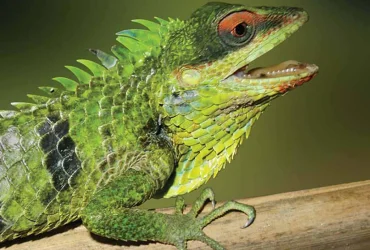 v1i2.13
v1i2.13ISSN: 1800-427X (print)
eISSN: 1800-427X (online)
DOI:10.47605/tapro.v1i2.13
Published date: 22 November 2009
Pp. 78–79
EDITORIAL
Colin Groves
Section Editor: Taprobanica, the journal of Asian Biodiversity
Considering that Sri Lanka is not a large island, about the size of Tasmania, its biological wealth is simply astonishing. Although the reptiles and amphibians of the island are increasingly well studied, our understanding of the mammals is lagging behind. In the days when Sri Lanka was a British colony, part of British India, there were a few British biologists who paid some attention to the mammals: notably Edward Blyth, curator of mammals in the Indian Museum in Calcutta, and a few taxonomists based in the British Museum (Natural History) in London: Oldfield Thomas, Martin Hinton, Robert Wroughton and Reginald Pocock. As far as I know, none of these scientists had ever actually visited Sri Lanka. Overwhelmingly, however, the basis for our understanding of the mammalian biodiversity of Sri Lanka is due to four people: Kelaart, Phillips, Osman Hill and Deraniyagala. These four had actually lived in Sri Lanka, and Deraniyagala of course was a native of the country. Whereas the outsiders were mainly concerned with differentiating Sri Lankan mammals from those of India, the four "insiders" were alive to the diversity of mammals within Sri Lanka itself, a reality which has imposed itself more and more on our consciousness over the years.
eISSN: 1800-427X (online)
DOI:10.47605/tapro.v1i2.13
Published date: 22 November 2009
Pp. 78–79
EDITORIAL
Colin Groves
Section Editor: Taprobanica, the journal of Asian Biodiversity
Considering that Sri Lanka is not a large island, about the size of Tasmania, its biological wealth is simply astonishing. Although the reptiles and amphibians of the island are increasingly well studied, our understanding of the mammals is lagging behind. In the days when Sri Lanka was a British colony, part of British India, there were a few British biologists who paid some attention to the mammals: notably Edward Blyth, curator of mammals in the Indian Museum in Calcutta, and a few taxonomists based in the British Museum (Natural History) in London: Oldfield Thomas, Martin Hinton, Robert Wroughton and Reginald Pocock. As far as I know, none of these scientists had ever actually visited Sri Lanka. Overwhelmingly, however, the basis for our understanding of the mammalian biodiversity of Sri Lanka is due to four people: Kelaart, Phillips, Osman Hill and Deraniyagala. These four had actually lived in Sri Lanka, and Deraniyagala of course was a native of the country. Whereas the outsiders were mainly concerned with differentiating Sri Lankan mammals from those of India, the four "insiders" were alive to the diversity of mammals within Sri Lanka itself, a reality which has imposed itself more and more on our consciousness over the years.
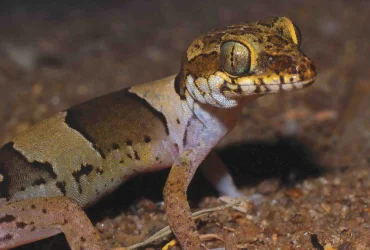 v1i1.12
v1i1.12ISSN: 1800-427X (print)
eISSN: 1800-427X (online)
DOI:10.47605/tapro.v1i1.12
Submitted date: 08 January 2009
Accepted date: 11 January 2009
Published date: 06 April 2009
Pp. 66–73.
SOCIAL BEHAVIOURS OF CAPTIVE Trachypithecus cristatus (MAMMALIA: CERCOPITHECIDAE) IN THE NATIONAL ZOOLOGICAL GARDENS OF SRI LANKA
A.A. Thasun Amarasinghe*, W. Madhava S. Botejue & Lee E. Harding
*Corresponding author. E-mail: thasun.taprobanica@gmail.com
Abstract
Trachypithecus cristatus (Silvered Leaf Monkey or Silvered Lutung) occur on the Malay Peninsula, Sumatra, Borneo and nearby islands and live mainly in uni-male, female-bonded groups. This study presents preliminary data on social behaviours for Silvered Leaf Monkey in captivity. Behavioural observations were conducted on one group (one adult male, four adult females, three juvenile males and four juvenile females). Data were collected on 30 of the 60 calendar days at the National Zoological Gardens, Dehiwala, Sri Lanka. All behaviours including agonistic and dominance-related, locomotion, feeding and infant-related behaviours were included in the analysis. Unlike in wild populations, we found a clear dominance hierarchy among females.
Key words : captive behaviour, dominance, hierarchy, langur, Sri Lanka, Trachypithecus cristatus
eISSN: 1800-427X (online)
DOI:10.47605/tapro.v1i1.12
Submitted date: 08 January 2009
Accepted date: 11 January 2009
Published date: 06 April 2009
Pp. 66–73.
SOCIAL BEHAVIOURS OF CAPTIVE Trachypithecus cristatus (MAMMALIA: CERCOPITHECIDAE) IN THE NATIONAL ZOOLOGICAL GARDENS OF SRI LANKA
A.A. Thasun Amarasinghe*, W. Madhava S. Botejue & Lee E. Harding
*Corresponding author. E-mail: thasun.taprobanica@gmail.com
Abstract
Trachypithecus cristatus (Silvered Leaf Monkey or Silvered Lutung) occur on the Malay Peninsula, Sumatra, Borneo and nearby islands and live mainly in uni-male, female-bonded groups. This study presents preliminary data on social behaviours for Silvered Leaf Monkey in captivity. Behavioural observations were conducted on one group (one adult male, four adult females, three juvenile males and four juvenile females). Data were collected on 30 of the 60 calendar days at the National Zoological Gardens, Dehiwala, Sri Lanka. All behaviours including agonistic and dominance-related, locomotion, feeding and infant-related behaviours were included in the analysis. Unlike in wild populations, we found a clear dominance hierarchy among females.
Key words : captive behaviour, dominance, hierarchy, langur, Sri Lanka, Trachypithecus cristatus
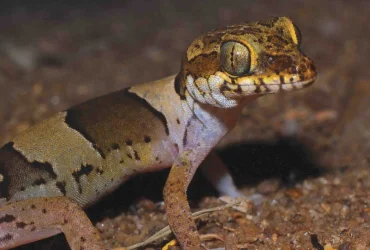 v1i1.11
v1i1.11ISSN: 1800-427X (print)
eISSN: 1800-427X (online)
DOI:10.47605/tapro.v1i1.11
Submitted date: 03 January 2009
Accepted date: 05 January 2009
Published date: 06 April 2009
Pp. 63–65
NOTES ON EX-SITU INCUBATION AND HATCHLINGS OF Eutropis carinata (SCHNEIDER, 1801) (REPTILIA : SCINCIDAE) FROM SRI LANKA
Thilina P. Walikanna & D.M.S. Suranjan Karunarathna*
*Corresponding author. E-mail: dmsameera@gmail.com
Eutropis carinata is widely distributed skink in Sri Lanka. This observation describes ex-situ incubation and hatching of this species at Colombo district in Sri Lanka. In total, 25 eggs with two adults of E. carinata were located from a termite mound while some villagers where trying to kill a cobra (Naja naja) living in the mound. Of these skink eggs, 20 were successfully incubated. The incubation period was 30 days from the date eggs were collected. The average incubation temperature varied from 26–28°C. Mean egg length was 15.6 mm and mean egg width 10.4 mm. Mean hatchling SVL was 28.5 mm and mean TL is 41.3 mm. The mean weight of hatchlings was ~3 g and the mean total length is 69.8 mm. After about five days, hatchlings were released at the original place of the clutch.
eISSN: 1800-427X (online)
DOI:10.47605/tapro.v1i1.11
Submitted date: 03 January 2009
Accepted date: 05 January 2009
Published date: 06 April 2009
Pp. 63–65
NOTES ON EX-SITU INCUBATION AND HATCHLINGS OF Eutropis carinata (SCHNEIDER, 1801) (REPTILIA : SCINCIDAE) FROM SRI LANKA
Thilina P. Walikanna & D.M.S. Suranjan Karunarathna*
*Corresponding author. E-mail: dmsameera@gmail.com
Eutropis carinata is widely distributed skink in Sri Lanka. This observation describes ex-situ incubation and hatching of this species at Colombo district in Sri Lanka. In total, 25 eggs with two adults of E. carinata were located from a termite mound while some villagers where trying to kill a cobra (Naja naja) living in the mound. Of these skink eggs, 20 were successfully incubated. The incubation period was 30 days from the date eggs were collected. The average incubation temperature varied from 26–28°C. Mean egg length was 15.6 mm and mean egg width 10.4 mm. Mean hatchling SVL was 28.5 mm and mean TL is 41.3 mm. The mean weight of hatchlings was ~3 g and the mean total length is 69.8 mm. After about five days, hatchlings were released at the original place of the clutch.
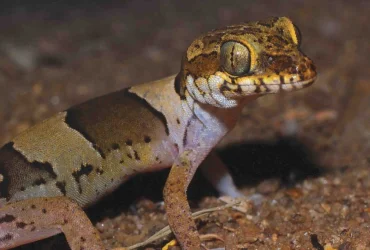 v1i1.10
v1i1.10ISSN: 1800-427X (print)
eISSN: 1800-427X (online)
DOI:10.47605/tapro.v1i1.10
Submitted date: 20 February 2009
Accepted date: 26 February 2009
Published date: 06 April 2009
Pp. 55–62, pls. 10–17.
THE WILD BUFFALO OF SRI LANKA
Colin Groves* & Jayantha Jayawardene
*Corresponding author. E-mail: colin.groves@anu.edu.au
Abstract
Buffaloes live wild in many areas in Sri Lanka, but it is controversial whether any of them are genuinely wild, or whether they are all feral. We investigated this question by observation of living buffaloes in Yala National Park, and measurement of available cranial material. We conclude that there is indeed an indigenous wild buffalo in Sri Lanka. Steps should be taken to ensure its genetic integrity.
Key words : Bubalus arnee migona, buffalo, cranial capacity, Sri Lanka, Yala
eISSN: 1800-427X (online)
DOI:10.47605/tapro.v1i1.10
Submitted date: 20 February 2009
Accepted date: 26 February 2009
Published date: 06 April 2009
Pp. 55–62, pls. 10–17.
THE WILD BUFFALO OF SRI LANKA
Colin Groves* & Jayantha Jayawardene
*Corresponding author. E-mail: colin.groves@anu.edu.au
Abstract
Buffaloes live wild in many areas in Sri Lanka, but it is controversial whether any of them are genuinely wild, or whether they are all feral. We investigated this question by observation of living buffaloes in Yala National Park, and measurement of available cranial material. We conclude that there is indeed an indigenous wild buffalo in Sri Lanka. Steps should be taken to ensure its genetic integrity.
Key words : Bubalus arnee migona, buffalo, cranial capacity, Sri Lanka, Yala
Hubungi Kami
The ultimate aim of the journal is to provide an effective medium for communication of the latest and best scientific information.
Copyright © 2020 Taprobanica. All Rights Reserved
Jasa Pembuatan Website by IKT




